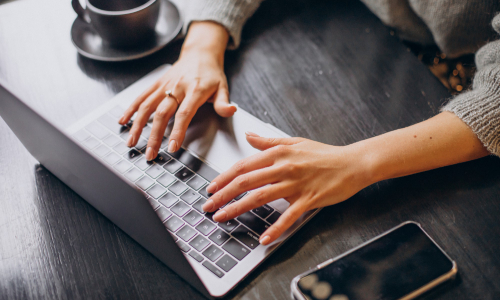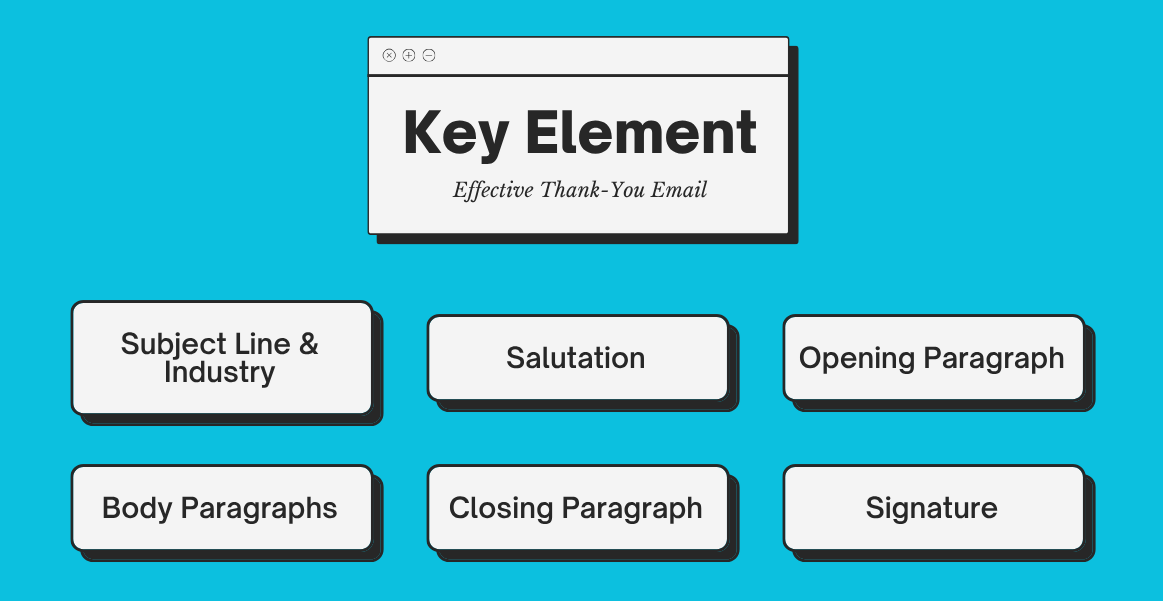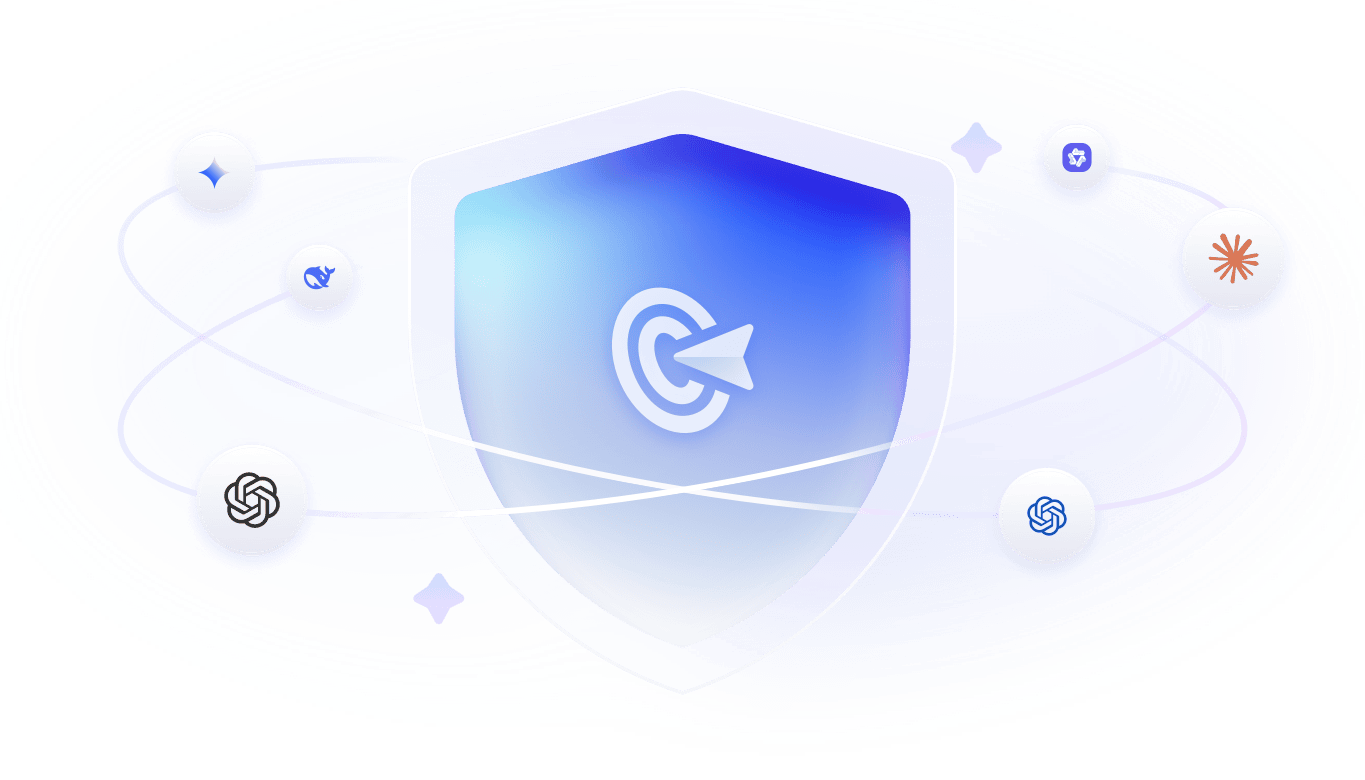Write a Thank You Email After a Meeting: Guide & Templates
Before we begin
Manual thank-you email personalization is often inefficient.
GoInsight.ai builds workflows to instantly send personalized thank-you emails, boosting connections.

Before we begin
Manual thank-you email personalization is often inefficient.
GoInsight.ai  builds workflows to instantly send personalized thank-you emails, boosting connections.
builds workflows to instantly send personalized thank-you emails, boosting connections.
Follow-up emails after meetings ensure clear communication and effective action. But if you want to build strong relationships, foster a positive collaboration atmosphere, and influence outcomes, a thank-you email after the meeting is just as essential.
Today, we'll discuss their importance, key elements, and offer helpful templates.

The Significance of Post-Meeting Thank-You Emails
1. Relationship Nurturing
One of the key factors of a thank-you email is that it keeps the 'connection' alive. It shows you value the recipient's time and helps maintain momentum with the recipient.
For example, after interviewing with an HR rep or manager, a short, memorable thank-you email can help you stand out and stay top-of-mind, increasing your chances of landing the role.
2. Personal Brand Building
Thank you emails can contribute to people's perceptions of you positively. A polished and sincere thank you email reinforces that you are courteous, proactive, and approachable.
All this helps build your personal brand, giving you a pristine reputation as a good communicator who follows through with their relationships.
Some elements that contribute to building a strong personal brand include:
- A warm, friendly tone
- Correct spelling and word choice
- Clarity & eagerness to link/communicate
3. Business Goal Reinforcement
Thank you emails can also be tactical. Sending a thank you email to a new client that you just onboarded reinforces what was agreed on without being 'pushy'.
It can also be used to recap commitments, outlining action items to pursue on the project, while reducing information loss and enhancing the clarity of meeting details.
It's an easy and effective way to keep things moving, keeping you in the client's good graces, directly impacting project execution and future deals.
Key Elements of an Effective Thank-You Email

1. Subject Line & Industry
The first thing your recipient sees is the subject line, and it can 'make or break' the effectiveness of the email. The subject line should be clear, concise, and relevant to the person you met with.
Personalized subject lines can have a massive impact on open rates, as analysis by Zippia showed a massive 50% increase in open rates when using personalized subject lines.
Here are some examples that work effectively for thank-you emails:
- For networking events: Great Connecting With You at (Event Name, Place) - Let's Stay in Touch
- For interviews: Thank You For the Opportunity – (Job Title) Role
- For partnership renewals: Appreciate the Ongoing Trust – Excited to Continue Our Collaboration
- For client meetings: Thanks for Your Time – Recap, Follow-up, & Next Steps
2. Salutation
The next step is your salutation. It's your opening greeting to the recipient and should match your 'relationship' with them.
If you're speaking to external parties, collaborators, and senior-level professionals, keep a more formal tone. Whereas for peers, long-time partners, and casual meetings, use a warmer tone.
| Greeting | Tone |
|---|---|
| Dear Mr./Mrs./Dr. | Formal |
| Hello Mr./Mrs./Dr. | Formal |
| To Whom It May Concern | Formal (to address 'unknown' recipients) |
| Hi/Hello (First name) | Informal, friendly |
| Good Morning/Afternoon (First name) | Informal, timely |
| Hi (First name), hope you're doing well | Informal, warm, friendly |
3. Opening Paragraph
Next comes your opening paragraph, which should include a sincere thank-you. It can also include the details of the meeting, like date and place, as well as some specifics from the discussion.
This shows your sincerity and attention to detail to build a positive rapport. Also add in a compliment, such as thanking them for taking the time to meet you, or for their insight into the meeting topic.
| Thanks/Compliment | Tone | Why it Works |
|---|---|---|
| Thank you for your time and the insight you brought to our discussion | Professional | A clear, direct indicator of your appreciation for their time and expertise. |
| It was great to hear about your vision for (project/goal) | Appreciative, semi-formal | Reaffirms long-term goals and vision, while subtly complementing their ideas. |
| I learnt a great deal from our conversation | Warm, formal | Directly values their contribution and insight to the meeting. |
| Thank you for taking the time out of your busy schedule to meet with me | Formal, professional | Acknowledges their seniority and that you respect their time meeting with you. |
| It was refreshing to meet someone who has such a forward-thinking approach | Positive & upbeat | Leaves a lasting impression, and makes them feel like they're innovative in the space |
4. Body Paragraphs
This is the core of the email where you'll mention specifics from the meeting to confirm details, agreements, and tasks, highlight key takeaways, and include any action items.
For example:
As per our discussion, I'll prepare the deck by (date) and highlight these key takeaways from our meeting:
- Summary Point 1 / Action Item
- Summary Point 2 / Action Item
- Summary Point 3 / Action Item
We can reconvene next week to refine the details and finalize the direction of the project.
💡Add some personal insight or resources that reaffirm your meeting specifics. This includes relevant reports and statistics, a rough draft of a deliverable, etc. This adds depth and utility to the email while inspiring confidence in your ability.
💡End the body section with a line or two expressing enthusiasm and eagerness for the future of your collaboration. It should be genuine but not too overbearing:
- I look forward to working with you on the project.
- Let's keep the momentum going. I'm happy to clarify any next steps whenever needed.
- I'm excited to move forward with the project and will be in touch soon with an update.
- I'd appreciate your valuable insight on anything we've discussed so far.
- Thanks again for your time and the productive conversation. I'm eager to see our vision fully realized.
5. Closing Paragraph
Lastly, close with a positive message reiterating your thanks. You don't need a lengthy paragraph; keep it clean, simple, and concise with a short, one-line sentence.
Then sign off with an appropriate closer:
- Kind Regards – Formal
- Best Regards – Formal
- Regards – Formal
- Thanks again – Casual
- Thank you – Casual
- Thanks – Casual
- All the best – Warm, friendly
- Wishing you well – Warm, friendly
💡Consider the relationship you have with the email recipient, including their position, how close you are, and the context of the meeting.
6. Signature
After your closing, you should have a professional signature. Here you should include all your relevant business details such as:
- Name
- Position
- Company details
- Phone numbers
- Any relevant social channels
- Address
💡Additionally, if you use an electronic handwritten signature, consider designing it to be clean, simple, with a dynamic, visually appealing style so your signature looks polished and well-designed.
Practical Writing Tips
1. Timing
The ideal time window for a thank-you email is 24 hours. If you take too long to send an email, it might be perceived negatively. However, in the event there is a delay because of unforeseen circumstances, ensure to address it. Be honest but keep it professional, for example:
- Apologies for the delay, I intended to reach out earlier to thank you for the meeting on (date), however…
- I regret the delay for this email, but I wanted to express my sincere thanks for taking the time to meet me on (date)
- Sorry for getting back to you so late, I've been meaning to reach out and thank you for… (meeting details)
2. Personalization
Always tailor your thank-you emails to the recipient.
While templates can help streamline the process, ensure to personalize them sufficiently. Mention specific references from the meeting, like a shared interest or topic, a light-hearted joke, insight, or details discussed during the meeting.
Tailor every thank-you email to the relevant recipient so that it feels natural and genuine.
3. Proofreading
Proofreading is integral to emails. Ensure you double-check important details like the meeting location/date, the person's name (ensure it's properly spelled), and avoid misgendering.
💡Proofread your text for correct use of punctuation, any spelling mistakes, and otherwise sloppy grammar. For extra reassurance, use grammar tools like Grammarly as an extra set of eyes for editing.
4. Conciseness
Remember that it's a 'thank-you' email, so it shouldn't be too long. Use it to touch base and help nurture your relationship. Keep it short, and avoid adding an overload of information.
Your recipient probably receives hundreds of emails daily. You don't want them to open yours only to find a wall of text to parse through. Use short sentences, paragraphs, and tables/bullet points when you can.
💡An easy way to do this is to run your initial draft through an AI software, like ChatGPT, to ask for any alternative ways to convey the message more concisely.
Examples of Thank-You Emails
Job Interview
Subject: Thank You for The Opportunity: [Job Title] Interview
Dear [Interviewer's Name],
Thank you for the opportunity and for meeting with me for the [Job Title] role [day/date]. I'm grateful to learn more about [Company Name]'s vision and how the role contributes to its success.
Our discussion reaffirmed my enthusiasm for the role. I'm confident that my expertise in [Relevant strength] aligns with the role's requirements.
Please don't hesitate to reach out if you need any additional information. I look forward to hearing back from you and to the future.
Best Regards,
[Your Name]
Client Meeting
Subject Line: Thank You For Your Time – The Next Steps
Hi [Client Name],
I'm grateful for your time and the great discussion today. I appreciate your vision and insight on [Project/Topic], and I'm enthusiastic to see it come to fruition.
As discussed, I'll get started on the [Project/action items] and follow up with [deliverables] by [day/date]. Do let me know if anything was missed or needs clarification.
Looking forward to your response.
Best Regards,
[Your Name]
Networking Event
Subject Line: A Pleasure Meeting You at [Event Name]
Hi [First Name],
Reaching out to say it was a pleasure meeting you at [Event Name] and chatting about [relevant topic/interest]. I truly enjoyed hearing about your work at [Company Name/Industry].
I'm eager to stay in touch and hopefully link up sometime soon for a coffee or call. Feel free to reach out if there's anything I can help with.
Warm Regards,
[Your Name]
[Relevant Contact Info]
Partnership Renewal
Subject Line: Thank You For Your Trust – Looking to the Future
Hi [Name],
Thank you for taking the time to meet today, I'm thrilled to hear we're continuing with the collaboration. It's truly been a pleasure working side-by-side with you this whole time, and I'm positive our future collaboration will bring even more value for both sides.
I'll get back to you with the [documents/contract] by [date]. I look forward to our continued success.
All the best,
[Your Name]
Academic Seminar
Subject Line: Appreciating Your Valuable Insights from [Seminar Name]
Dear [Professor/Speaker Name],
Thank you for your invaluable insights and informative session on [topic] [day]. In particular, I found your thoughts on [specific topic] incredibly valuable, which have brought a new way of thinking I hadn't previously explored.
If you're available and open to it, I'd love nothing more than to continue our conversation and attend future talks you host.
Best Wishes,
[Your Name + Institution]
Conclusion
And that's everything you need to know about crafting the perfect thank-you email after a meeting. The most important thing to remember is to keep it highly relevant to the recipient.
Ensure to include references to what was discussed to show your attention to detail.
Otherwise, it's all about learning to express yourself appropriately and concisely. It'll be hard at first, but keep at it and you'll perfect the craft!






Leave a Reply.